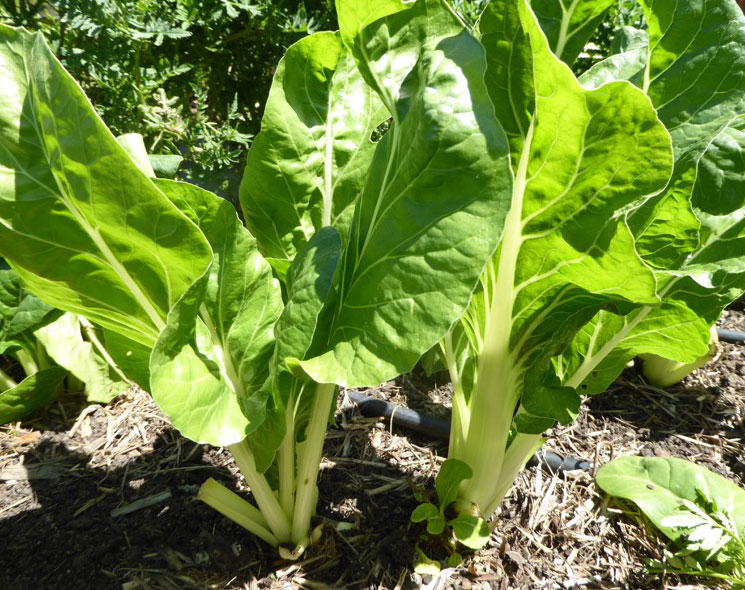Botanical name:
Beta vulgaris, var. cicla
Description:
Silverbeet, also known as Swiss chard is actually the same plant as the beetroot and the rainbow chard. Farmers selectively bred more leafy cultivars with smaller to no bulbs and thicker stems. They grow about 50 cm high.
The leaves show an intense green, have white veins and are rhombic oblong. The thick stalks are mostly white, ridged and succulent. Stalks and leaves are the vegetable.
It is reported to be a good source of vitamin C, vitamin A and anti-oxidants. Silverbeet is a high oxalate plant which can be of concern for people with a tendency to kidney stones, but is considered save if not eaten excessively.
How to grow:
Sow 12 mm deep into seed beds. Soaking the seeds a few hours before planting gives them a good headstart. It also allows to separate the seeds that come in little clumps and are prone to a lot of competition if left stuck together. Seedlings appear after 10 days. Grow until 5 cm high.
Transplant into single pots and grow to a 15 to 20 cm plant, lightly feeding with seaweed fertiliser. Transplant to the garden bed into light, well drained soil enriched with compost. Aim for a 40 cm spacing.
Silverbeet grows in a sunny spot and in partial shade and needs consistent watering.
Mulching the beds helps to keep the soil moist and cool.
If it shoots and starts to flower it can be cut down to the base and often re-sprouts.
Doesn’t need much fertilising.
8 to 12 weeks to harvest.
Growing in the neighbourhood
Companions are parsley, parsnip, lavender, tomatoes, onions, all kinds of lettuce, members of the cabbage and legume families. Doesn’t like to have sweet corn, carrots and members of the gourd family in the same bed, also doesn’t like most herbs.
Pests and other problems and how we deal with them:
Silverbeet is pretty pest resistant. Slugs and snails like the leaves, they turn up in very wet conditions and can be picked off and also deterred by sprinkling the bed’s surface with coffee grounds.
Caterpillars of butterflies and moths do a bit of damage if plants are in dry stress. A bit of leaf loss on mature plants is tolerable, if caterpillars take away too much leaf material we spray the plants with a bacterial solution that controls them.
If dry stressed, silverbeets can be attacked by slaters, they can be collected out of the bed or trapped in beer traps.
Season:
Spring to late Autumn
Seed-saving:
Silverbeet cross pollinates with other plants of the amaranth family. In order to collect useful seeds the mother-plant would need to be kept isolated.
How to harvest and use:
Pick the outer leaves of the plant, it is a cut and regrow plant. Please always cut stems at the bottom of the plant. Cutting off leaves and leaving the stems on the plant makes it vulnerable to pests and mould. After the growing season is over, the base and the root are good for compost.
All parts of the silverbeet show a slight earthy flavour.
Leaves and stems of the silverbeet are a very versatile vegetable. Blanch them to reduce oxalate if you like.
Cut stems into smaller pieces and cook for a little longer than the leaves, they make a great side dish of leafy greens and are great fillings in pies and frittatas. A hint of nutmeg goes very well with silverbeet.
